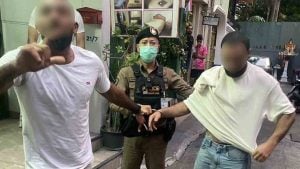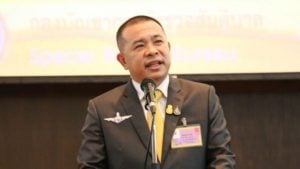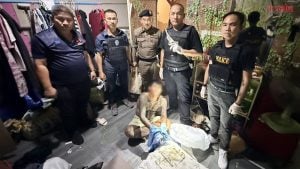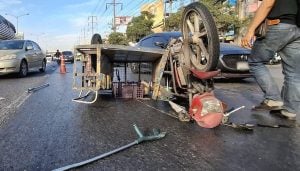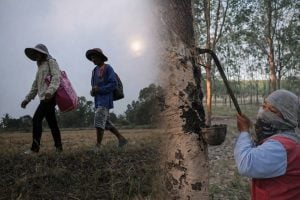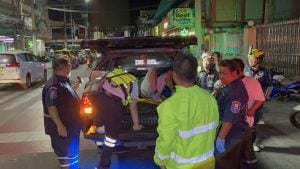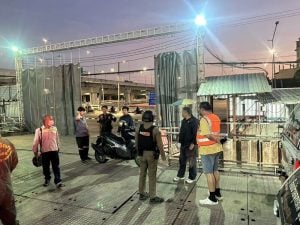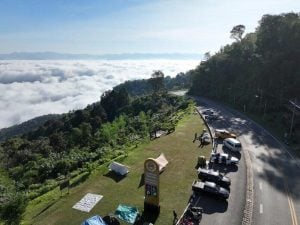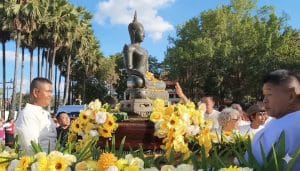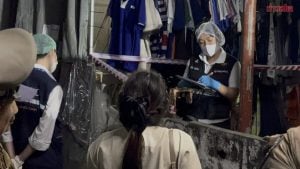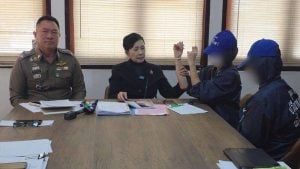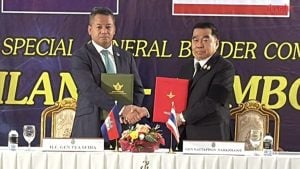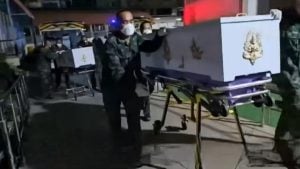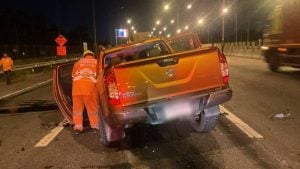Myanmar trapped in a vicious cycle of violence

Since the military coup in Myanmar and the army’s violent suppression of pro-democracy protests, new armed resistance groups and conflict regions have been emerging in the Southeast Asian country.
While a kind of urban guerilla has begun in major cities such as Yangon and Mandalay, the ousted democratically elected government has been trying to form a federal army underground, the so-called People’s Defense Force (PDF).
The emergence of new flashpoints throughout the country is exacerbating the humanitarian situation, which is already precarious due to the coronavirus pandemic and the rapidly advancing collapse of the economy.
Aid organizations are finding it increasingly difficult to get assistance to those in need because of the poor security situation.
The situation is also leading to an increase in crime, especially drug trafficking.
This has an impact on not only Myanmar’s immediate neighbors, but also all across South, Southeast and East Asia, the regions where synthetic drugs from Myanmar are flooding the markets.
Junta relies on coercion and violence
The military, called Tatmadaw in Myanmar, has branded the opposition as “terrorists” and ruled out negotiations. As in the past, the generals are relying on coercion and violence to maintain their grip on power.
According to the US-based Assistance Association of Political Prisoners, the military has killed 883 people and arrested more than 5,000 since the coup.
Opposition forces, which have in turn declared the military “terrorists,” also categorically ruled out talks with the army leadership.
“The resistance has taken on an increasingly revolutionary character, with most dissidents no longer aiming for restoration of the status quo ante, but for the Tatmadaw’s disbandment and its replacement by a new armed force that is not dominated by the Burman ethnic majority,” Richard Horsey, a Myanmar expert at the international Crisis Group (ICG) wrote in a report.
“This revolutionary agenda requires the Tatmadaw’s defeat or capitulation.”
New armed resistance groups
In response to the hardened fronts, new armed resistance groups have been formed, such as in the city of Mindat in western Chin State. There, the new Chinland Defense Force (CDF) had been formed and, in May, several skirmishes broke out with the military after negotiations failed. The latter shelled the city with artillery before dropping airborne troops and regaining control of Mindat.
The CDF fighters and most of the town’s inhabitants fled to the surrounding hills, where they still live in deplorable conditions.
Mindat is not the only place to have witnessed such developments. Other parts of the country, such as Sagaing in the center of the country and Kayah State near the border with Thailand, have also seen fierce fighting.
To fight the insurgencies, the military follows its “four-cut strategy,” which involves targeted attacks — including on the civilian population — to cut off the insurgents from food, money, recruits and information.
Urban violence on the rise
Myanmar expert Horsey fears that the current situation makes it likely “that new armed groups will emerge in these regions on a permanent basis, along the lines we’ve seen in various parts of Myanmar over many decades.”
In cities, small groups of civilians and protesters have taken to fighting the military regime through sabotage, arson, bombings and the murder of perceived or actual informants. Since April, there have been several hundred attacks throughout the country.
The attacks are targeted not only at administrative buildings, banks, police and military installations, but also at schools. The aim is to deter parents from sending their children to school. Opponents of the coup had called for a boycott of schools.
In response to the attacks on schools, the underground National Unity Government (NUG) formulated a code of conduct for opposition forces on May 26 prohibiting attacks on schools, medical facilities and other civilian targets. Since then, there have been fewer attacks on schools, but they have not stopped entirely.
In the initial months after the coup, the NUG attempted to forge a military alliance with long-standing ethnic armed groups. “But so far, none of these groups has been willing to join the military alliance,” Horsey said. These armed groups do harbor fugitive dissidents and also train them in weaponry and sabotage, but they do not report to the NUG.
Having failed to form a united front, the NUG announced the formation of a federal army, the PDF, on May 5. However, the PDF does not control any territory, nor does it have any heavy weapons. It is also completely unclear where the officers will come from and whether there is a functioning chain of command.
Little prospect of success
Lucas Meyers, a political analyst at the US-based think tank Wilson Center, said that the military appears to have the upper hand. “The prospects of opposition military victory against the Tatmadaw are slim under current circumstances.”
ICG expert Horsey doesn’t seem to share this view entirely.
“The rise of new militias in many different locations has created a much more complex conflict landscape for the Tatmadaw,” Horsey said. Confronting these militias while also dealing with escalated fighting with ethnic armed groups and deploying troops to the main cities to suppress dissent, will likely stretch the regime’s forces, he pointed out.
Nevertheless, he added, counterinsurgency campaigns “have been the Tatmadaw’s stock in trade.”
Meanwhile, Myanmar expert Andrew Selth warns against the opposition engaging in unrestrained violence. “As such, it is a propaganda gift to the junta, particularly when innocent people are killed or injured,” he said.
“The use of these tactics also restricts the scope for foreign governments and international organizations to assist the opposition movement.”
This article has been translated from German.
SOURCE: DW News
Latest Thailand News
Follow The Thaiger on Google News:






